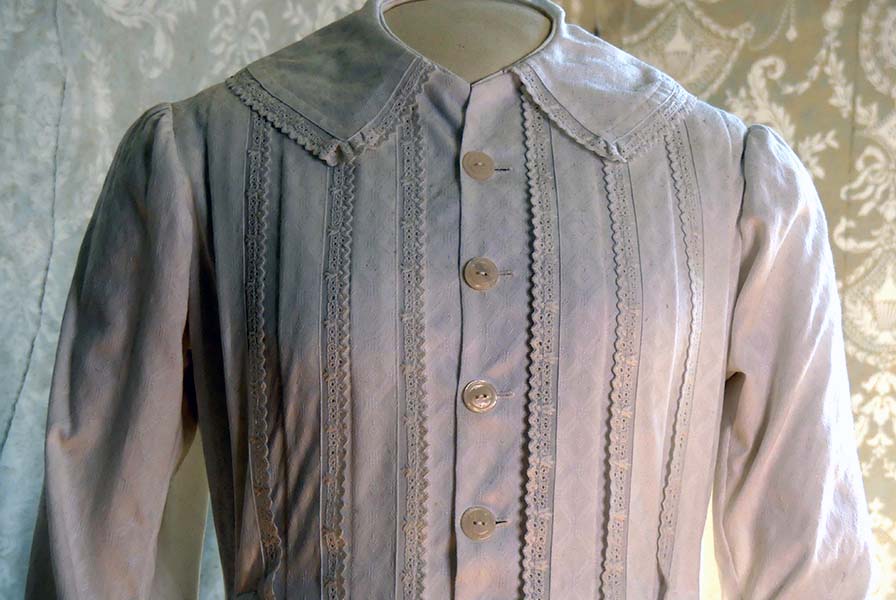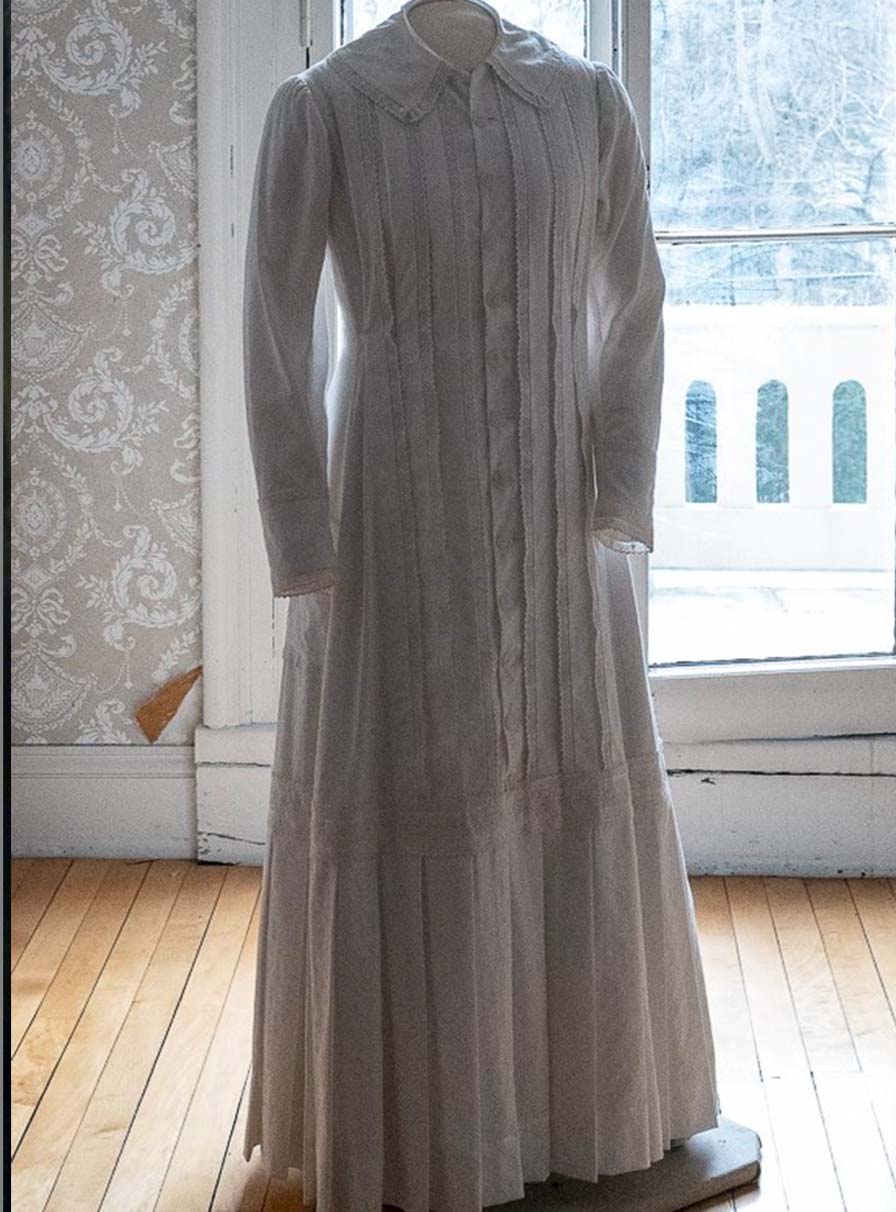The White Dress
Dickinson’s sole surviving garment is the white dress now inseparable from her public image. Worn in her later years, the dress was made of cotton piqué with mother-of-pearl buttons. Women commonly donned such wrappers or house dresses for doing housework. As Dickinson withdrew from the Amherst social scene, she certainly had fewer reasons to change into the intricate garb women wore to receive visitors or go out.

Multiple contemporary accounts describe Dickinson as wearing white, and popular conceptions of the poet clad exclusively in this color developed as a result. The poet herself never recorded a deliberate proclivity for the color, however, and she once wrote to a cousin: “My sphere is doubtless calicoes, nevertheless I thought it meet to sport a little wool. . . . Won’t you tell ‘the public’ that at present I wear a brown dress with a cape if possible browner, and carry a parasol of the same!”
Emily Dickinson to Louise Norcross (L228), December 1860?, in The Letters of Emily Dickinson, ed. Thomas H. Johnson (Cambridge, MA: Belknap Press of Harvard University Press, 1958), 2:370.
